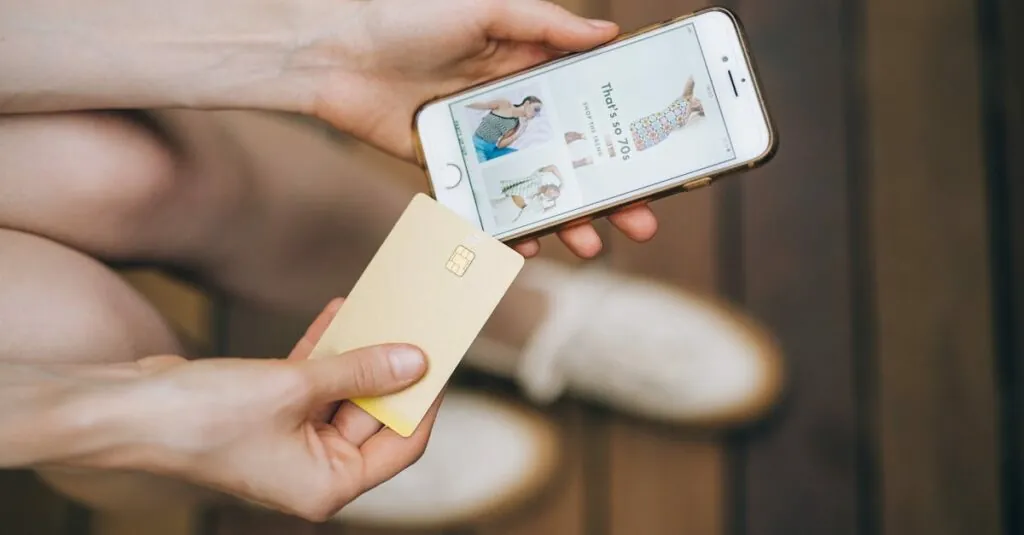Table of Contents
ToggleLost in the labyrinth of your iPhone 7? Don’t worry, you’re not alone. Many people find themselves on a quest to locate that elusive SIM card slot, wondering if it’s hiding behind a secret door or camouflaged like a ninja. Spoiler alert: it’s not as tricky as it seems!
Overview of iPhone 7 Design
iPhone 7 showcases a sleek and minimalist design, standing out with its aluminum body and vibrant display. The 4.7-inch Retina HD display offers clear visuals, enhancing user experience for various activities, including texting and viewing images. Notably, the device lacks visible antenna lines, giving it a clean aesthetic that appeals to many users.
The placement of buttons and ports plays a crucial role in functionality. Volume buttons, mute switch, and the power button sit conveniently on the sides, providing easy access. A significant design choice is the removal of the headphone jack, allowing for a more streamlined profile. Users connect via Bluetooth or adapted Lightning headphones.
On the bottom edge, the Lightning port serves as the primary charging and data transfer point. Users can quickly connect compatible accessories, ensuring versatility. The SIM card slot also resides on this edge, indicated by a small tray.
Device dimensions measure 5.44 inches in height, 2.64 inches in width, and 0.28 inches in depth. These specifications contribute to a comfortable grip, allowing users to handle the device easily. Weight is another consideration, as the iPhone 7 weighs approximately 4.87 ounces, making it lightweight and portable.
Color options further enhance aesthetics. Users can choose from various finishes, including Jet Black, Matte Black, Silver, Gold, and Rose Gold. Each color offers a unique appeal, catering to diverse preferences.
Overall, iPhone 7 design integrates form and function seamlessly, balancing style with user requirements. Its dimensions, features, and aesthetic options reflect Apple’s commitment to delivering a quality product.
Locating the SIM Card Tray
Finding the SIM card tray on the iPhone 7 is straightforward once you know where to look. This section outlines the tools needed and the steps required for locating the tray.
Tools Required for Accessing the SIM Card
Essential tools for accessing the SIM card tray include a SIM eject tool or a paperclip. Both items effectively fit into the tray’s small hole. Users must ensure they have a steady hand to avoid damaging the device. Some individuals prefer using a SIM eject tool due to its precise design, while others choose a paperclip for convenience. Either option suffices for properly ejecting the tray.
Steps to Locate the SIM Card
Locating the SIM card tray involves a few simple steps. First, users should position the iPhone 7 with the screen facing up. Next, they locate the small tray on the right side, near the bottom edge. Inserting the eject tool or paperclip into the tiny hole will unlock the tray. By gently pushing, the tray will pop out, revealing the SIM card inside. Placing the tray back in requires aligning it correctly and pushing it until it clicks into place. Following these instructions ensures a successful SIM card extraction.
Importance of SIM Card Placement
Proper SIM card placement significantly affects device functionality and user experience. The placement of the SIM card directly influences connectivity and overall performance.
Impact on Connectivity
Strong connectivity relies on correct SIM card placement. A misaligned or improperly seated SIM card causes issues such as dropped calls or inability to access mobile data. Repeatedly experiencing these problems suggests the SIM card tray isn’t properly engaged. Users benefit from ensuring the SIM card is snugly inserted, promoting stable signal reception. Maintaining this alignment enhances communication while using the iPhone 7.
Importance for Troubleshooting
SIM card location plays a key role in troubleshooting connectivity issues as well. When problems arise, checking the SIM card’s placement serves as a logical first step. An incorrectly placed SIM card may lead to network errors, leaving users frustrated. Verifying the card and tray can resolve many issues without the need for technical support. Addressing SIM card concerns quickly reduces downtime, ensuring seamless access to services.
Common Issues with SIM Card Access
SIM card access can present various challenges for users. Identifying these issues helps in resolving them effectively.
Symptoms of SIM Card Problems
Users might experience several symptoms indicating SIM card problems. Common signs include “No Service” messages appearing on the screen, dropped calls, or an inability to connect to mobile data. The device may also fail to recognize the SIM card during setup, displaying an error message. In some cases, users notice frequent signal drops or inconsistent connectivity. These symptoms often stem from improper SIM card placement or card damage. Regularly checking for these indicators ensures timely responses to connectivity issues.
Solutions to Common Issues
Multiple solutions exist for addressing SIM card access problems. Start by ensuring the SIM card is inserted correctly, with the gold contacts facing down. Restarting the device often resolves temporary glitches. If issues persist, removing and reinserting the SIM card may help restore functionality. Checking for physical damage on the SIM card is crucial as well; a damaged card needs replacement. Additionally, trying the SIM card in another device can clarify whether the problem lies with the card or the iPhone 7 itself. Implementing these strategies effectively enhances user experience and connectivity.
Finding the SIM card slot on the iPhone 7 is more straightforward than many users might think. By following the simple steps outlined in the article and using the right tools, anyone can access the SIM card tray with ease. Proper placement of the SIM card is essential for optimal device performance and connectivity.
Addressing any issues related to the SIM card promptly can significantly enhance the user experience. Whether it’s ensuring the card is correctly inserted or troubleshooting connectivity problems, taking these steps can lead to a more reliable and enjoyable use of the iPhone 7. With its sleek design and advanced features, this device continues to meet the needs of its users.







